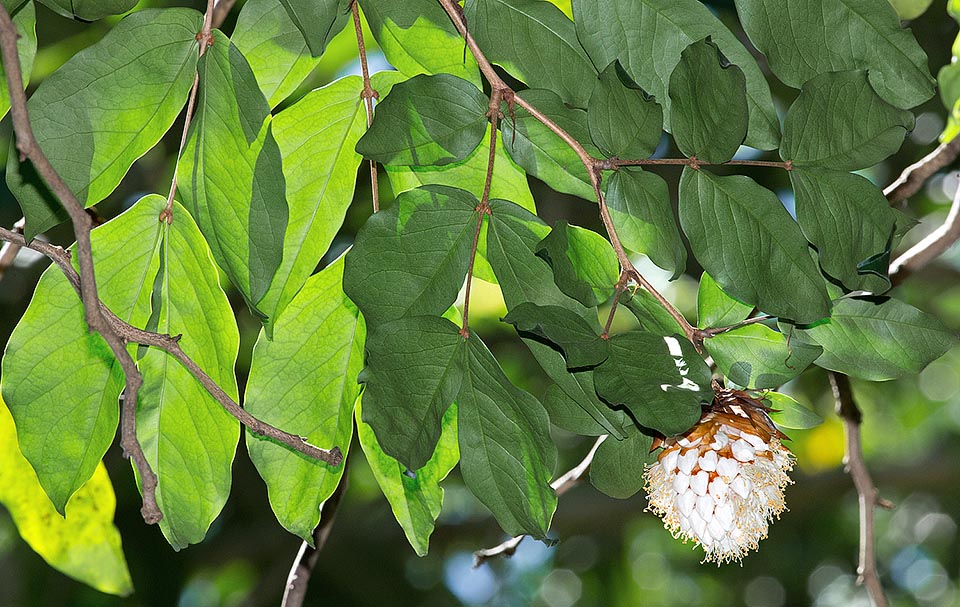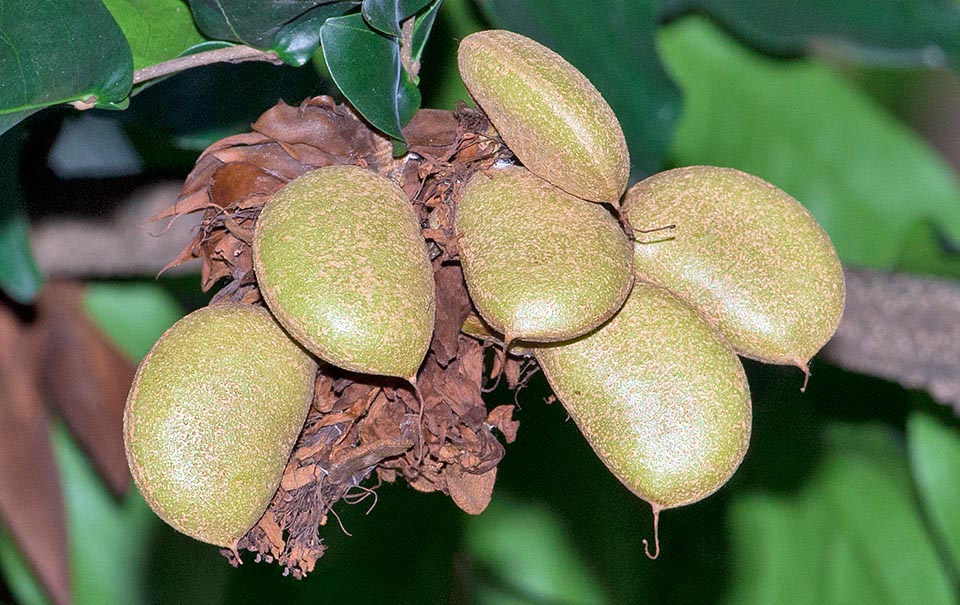Family : Fabaceae

Text © Pietro Puccio

English translation by Mario Beltramini

In the humid Java, New Guinea and Sumatra humid forests the Maniltoa brwneoides can be 30 m tall © Giuseppe Mazza
The name of the genus comes from the name used by New Guinea natives; the specific name is the combination of the name of the genus Brownea Jacq. and of the Greek suffix “-οειδής” (-oeidés), from “εἶδος“ (êidos) = shape, look, due to the resemblance with some species belonging to the genus.
Common names: handkerchief tree (English); daun saputangan (Indonesia); pokok saputangan (Malaysia); indeke, sekadjaka (Papua New Guinea); asòhk kăao, asòhk mai pĥāchĕdnā (Thailand).
The Maniltoa browneoides Harms (1902) is a shrub or an evergreen tree that may reach the 30 m of height in the old specimens in nature, but that is kept much lower in cultivation, 6-12 m, with erect trunk, of up to 40 cm of diameter, provided at the base with tabular roots (roots similar to buttresses), up to 1 m tall, and brown-reddish bark.
The leaves, on a short petiole, are alternate, paripinnate, with 6-22 cm long rachis, and (2-)3(-4) pairs of sessile leaflets, opposite, ovate-elliptic, asymmetric with respect to the central rib, with entire margin and obtuse apex, of dark green colour and glossy above, paler below, 5-20 cm long and 3-8 cm broad. The new vegetations initially hang from the branches, with the young leaves strictly overlapped between them and of white colour with a light green tinge, that after some days turn gradually dark green and stretch.
Racemose terminal inflorescences, globose, compact, produced at the same time of the new vegetation, initially covered by imbricate bracts, formed by numerous white flowers, delicate, that quickly turn brown after the pollination, with about 1,5 cm long sepals, 1,2-1,8 cm long petals and numerous (60-80) prominent stamina 2-3 cm long. The fruits are indehiscent woody legumes, curved, about 7 cm long, with rough surface of pale brown colour containing ine seed only.
It reproduces by seed, previously kept in water for two days, in draining loam maintained humid at the temperature of 26-28 °C, and by air layering.

The odd racemose terminal inflorescences, globose, compact, produced at the same time as the new vegetation, are initially covered by imbricate bracts. The white flowers, delicate, turn quickly brown after the pollination. About 1,5 cm long sepals, 1,2-1,8 cm petals and 2-3 cm prominent 60-80 stamina © Giuseppe Mazza

The fruits asurface of pale brown colour contianing one re indehiscent woody legumes, curved, about 7 cm long, with rough seed only © Giuseppe Mazza
Synonyms: Pseudocynometra browneoides (Harms) Kuntze (1903); Maniltoa gemmipara Backer (1911).
→ To appreciate the biodiversity within the family of FABACEAE please click here.
